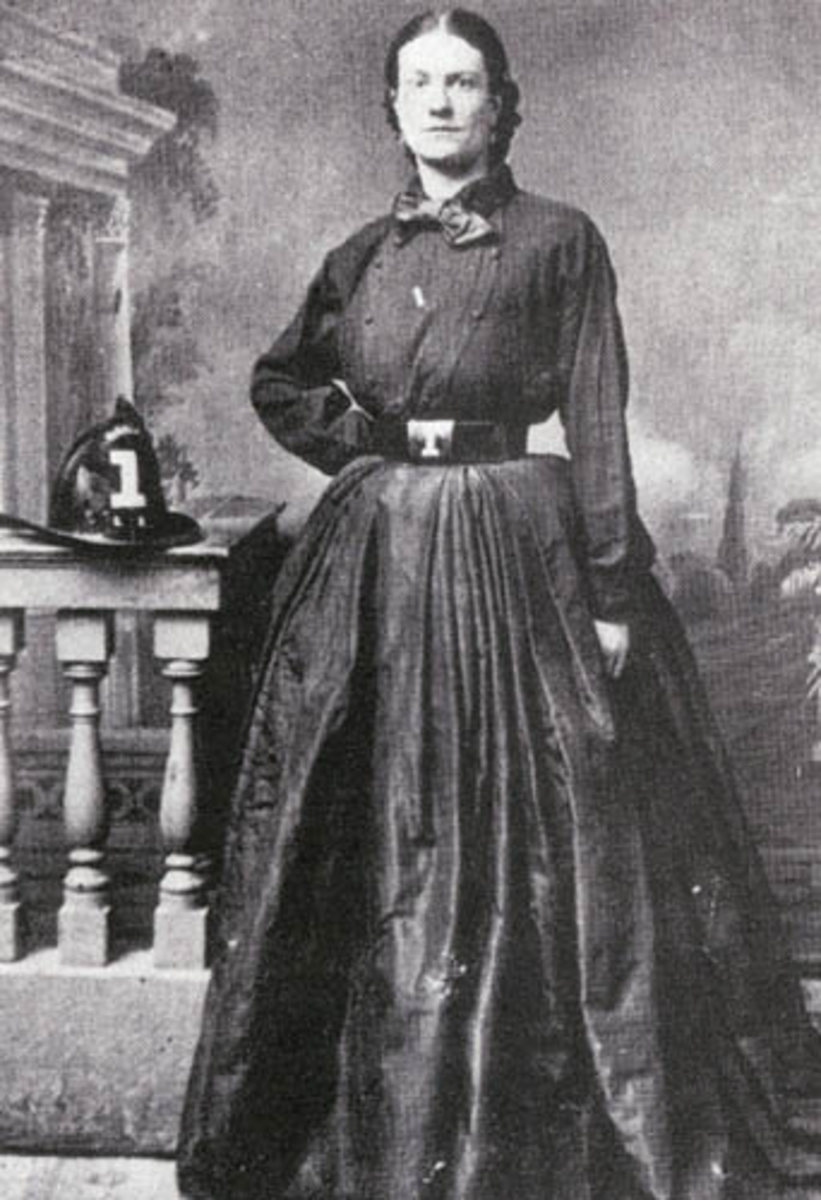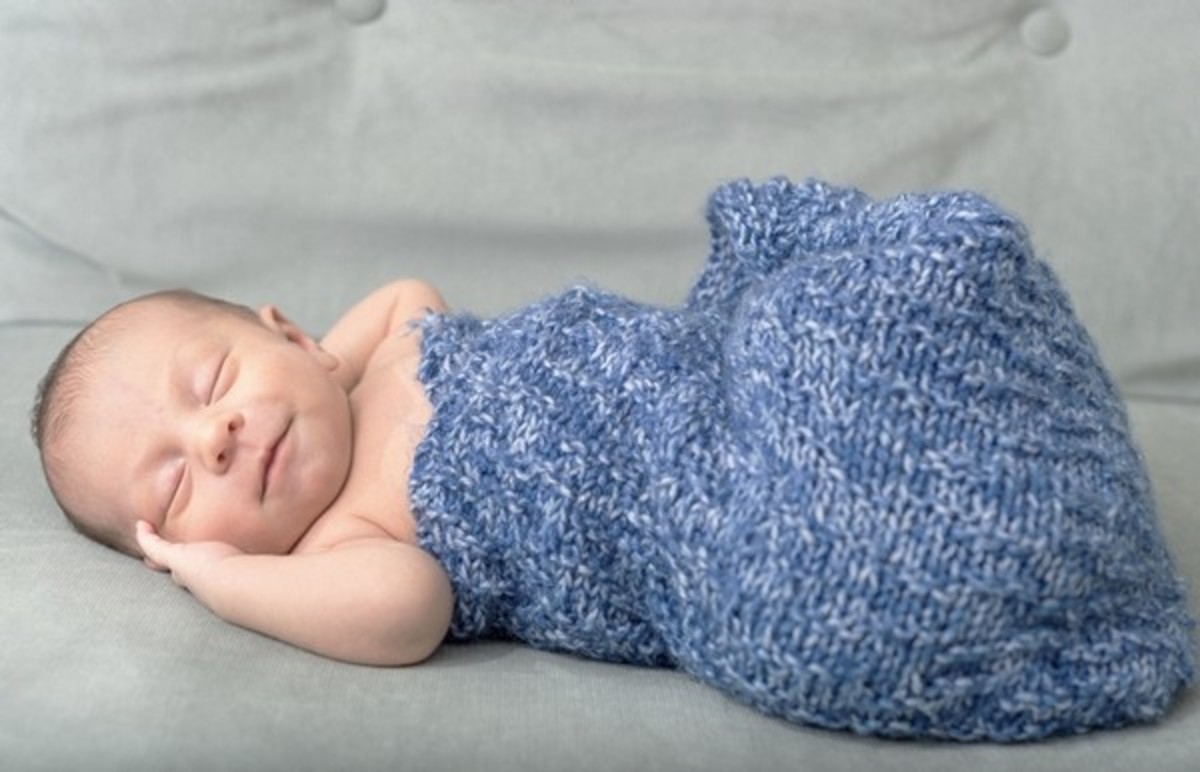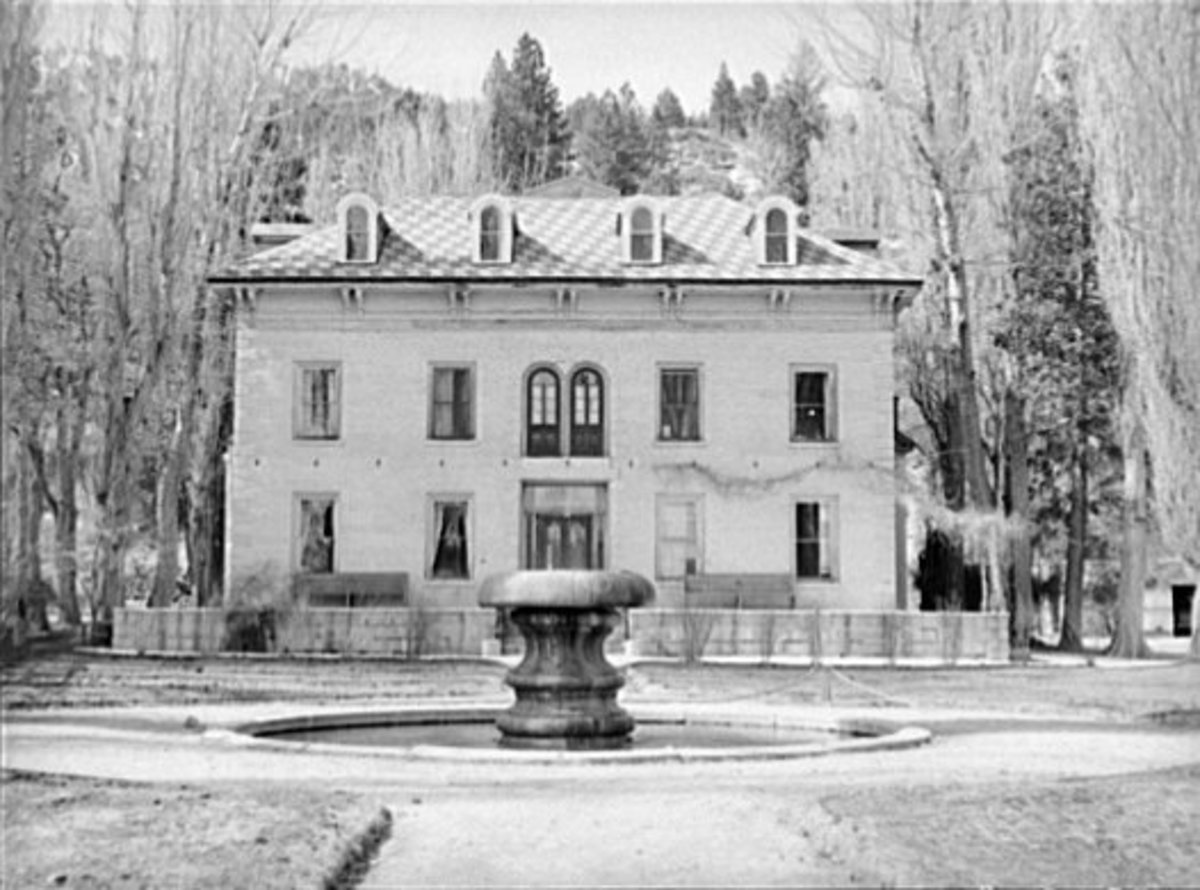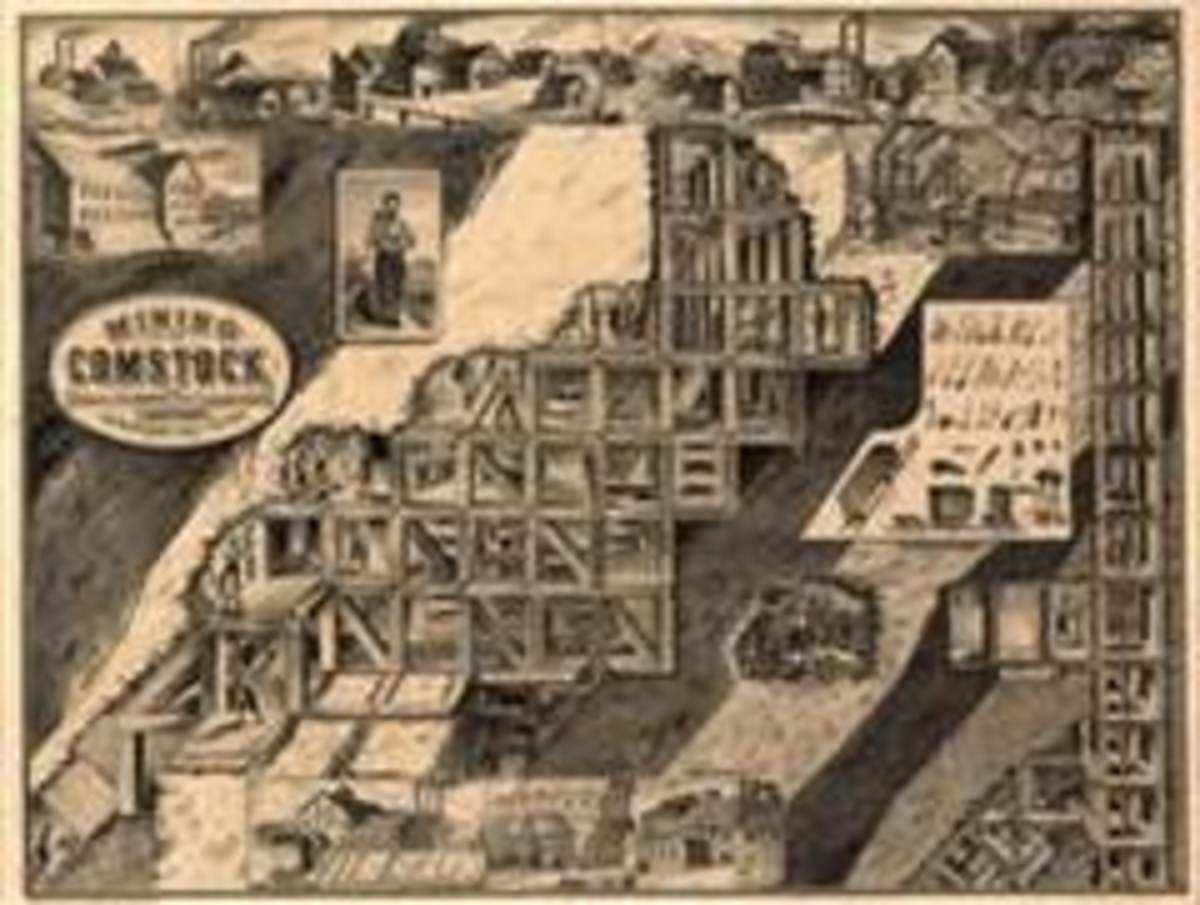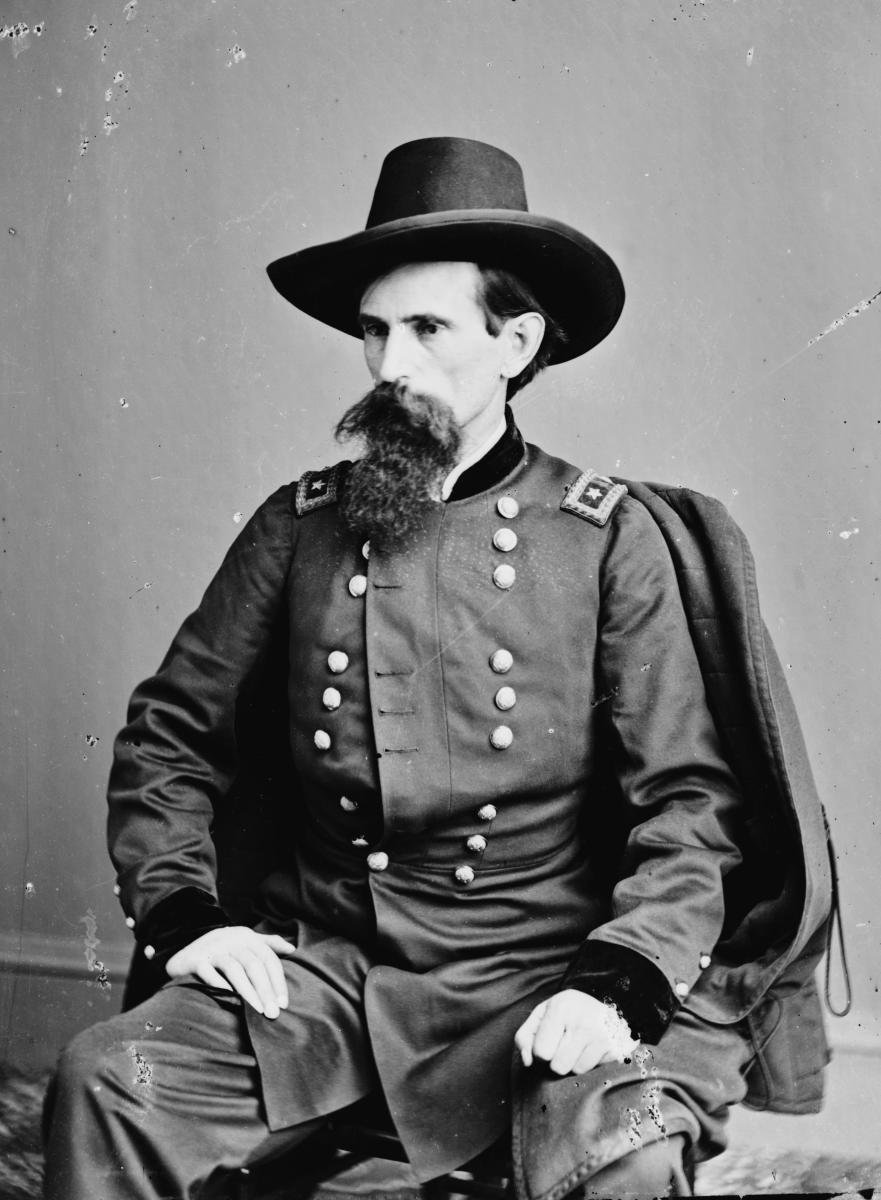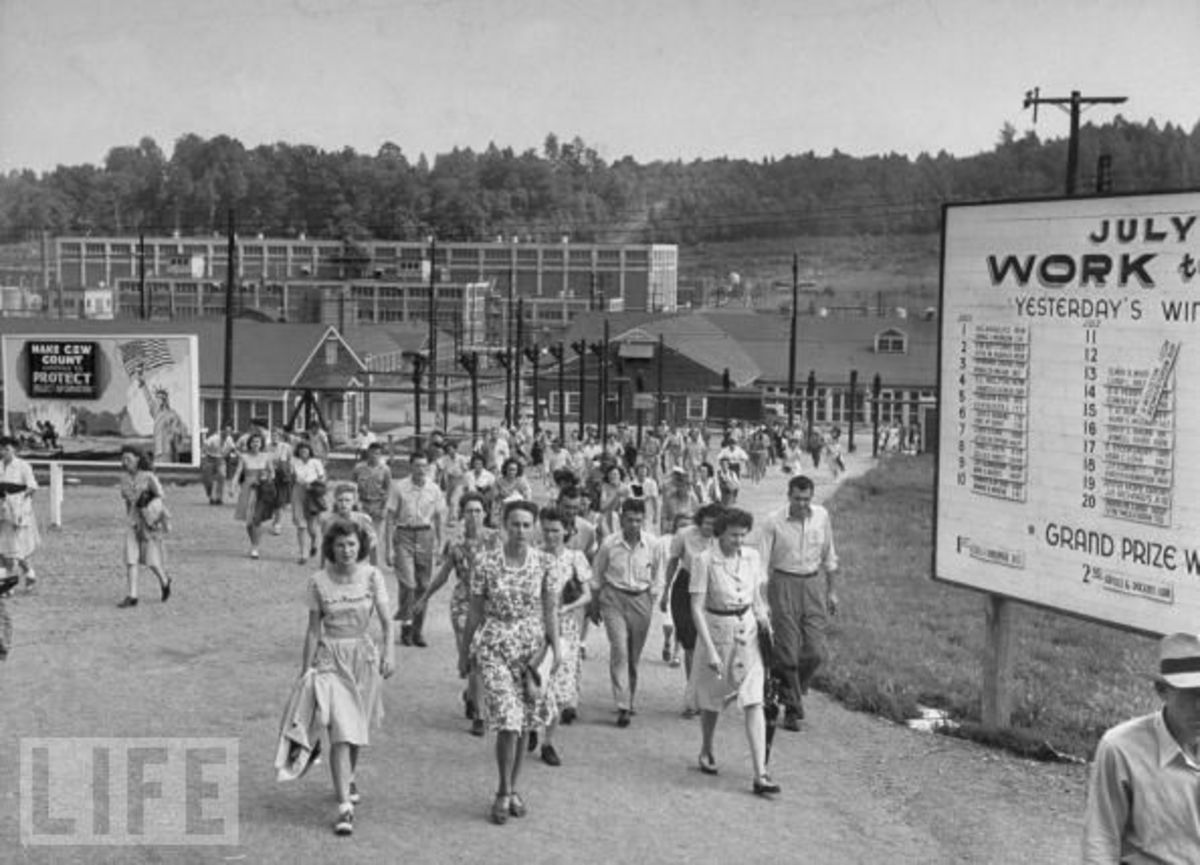- HubPages»
- Education and Science»
- History & Archaeology»
- History of the Americas
The Woman of Today Rises: Margaret Sanger
Margaret Sanger
![By Underwood & Underwood [Public domain], via Wikimedia Commons By Underwood & Underwood [Public domain], via Wikimedia Commons](https://usercontent2.hubstatic.com/8826335_f520.jpg)
No Woman Can Call Herself Free Who Does Not Own Her Body
**Note to readers: this is not a pro- or anti- anything. I'm just reporting the facts, and you'll probably be really surprised.
Margaret Louise Higgins was one of eleven children bon into a struggling Irish-Catholic family in Corning, New York. Tragedy struck the family early; her mother, weakened from eighteen pregnancies in less than thirty years, wasted away rapidly from tuberculosis and died at the age of 49. Her father, a stone mason and supporter of women’s suffrage, struggled to keep the family fed and housed as he was not very reliable at working.
Margaret was lucky in two aspects, though—she was very intelligent, and two of her older sisters recognized it. Her sisters worked hard and saved up enough money to send Margaret to Claverack College in the Catskills. There, Margaret initially thought that she would be a teacher—typically the only kind of employment an educated woman could get—but when she discovered nursing she was hooked. Margaret studied to become a nurse, but her funds quickly ran out and she was forced to leave college without graduating.
After some time Margaret met William Sanger, an up-and-coming artist and architect. They married in 1902, and, after Margaret nearly died delivering their first son, William willingly abstained from having sex with her for five years until she recovered. In that time they built an amazing home together, and in 1908 they had another son, followed by a daughter in 1910.
Then, tragedy struck again; Margaret’s beloved house caught fire and burned to the ground. She and her family escaped, by as she watched the fire immolate the house Margaret realized that there was more to life than just creature comforts and pretty things. Soon after she resolved to return to nursing and began working in Manhattan’s Lower East Side, going door to door with a doctor treating impoverished people who could not get the health care they needed.
There was one case that horrified Margaret, and ultimately set in motion her quest to improve both women’s health and women’s rights. One day she and the doctor went to an apartment where a woman named Sadie Sachs lived with her husband and several children. Saide was in bed, desperately sick from an infection she contracted after performing a self-induced abortion. As the doctor treated her injuries, a frightened and desperate Sadie asked him what could she do to prevent another pregnancy?
The doctor laughed and told her to tell her husband to sleep on the roof.
Margaret was shocked at his indifference, but she didn’t speak up. Three months later, Margaret found herself rushing back to Sadie’s apartment, finding her in bed again, dying from septic shock.
How did Sadie get sepsis? Simple: she performed another self-induced abortion. And this time she didn’t survive.
Outraged, Margaret resolved to teach women about sex, reproduction and something she termed “birth control”—that is, using contraceptives such as condoms and diaphragms to prevent pregnancy without interfering in sex. A friend said that Margaret was, “the first person I ever knew who was openly an ardent propagandist of the joys of the flesh,” but this went beyond enjoying sex without fear of pregnancy; Margaret wanted women to be able to decide when they were ready to have children, when they didn’t want to have children, to live lives that were unencumbered by children, pregnancy or sexually transmitted diseases, to not die prematurely in childbirth and to keep infants from being thrown in the trash. She once gave a speech on limiting family size to a group of women laborers on strike and was loudly applauded. Her friend labor leader Bill Haywood then stood up and said that the future was built on the backs of those brave striking women, and in the future they’d be so wealthy they could have all the babies they wanted. He was met with stony silence.
While a great many women were interested in what Margaret had to say, many others felt that she was obscene and profane. Only one newspaper, the Socialist journal The Call, hired Margaret to write a weekly column entitled, “What Every Girl Should Know,” where she educated readers on sexual health, carefully skirting around the issue of birth control at first. Still, the column on STDs raised the ire of the U.S. Post Office, who claimed that her articles were pornographic in nature and refused to deliver the newspaper. Her final column read:
“WHAT EVERY GIRL SHOULD KNOW—
Nothing.
By the U.S. Post Office.”
The Post Office had taken over her column, refused to allow her to write anything and instead printed their own column. In retaliation, Margaret launched her own newspaper, The Woman Rebel, with the motto, “No Gods, No Masters,” and continued to educate women on contraception, sexual health and STDs. In August of 1914, after opening the National Birth Control League (which eventually became Planned Parenthood), Margaret was arrested on obscenity charges under the Comstock Law (which forbids the dissemination of any pornographic materials, though that meant a medical volume of human reproduction could be considered pornographic as well) but she fled, escaping to Europe to a year as she waited for things to settle down in the United States.
While in Europe, Margaret researched forms of family planning there, and her husband William continued to distribute her pamphlet Family Limitations, and was arrested on obscenity charges. A judge told him, “If some persons would go around and urge Christian women to bear children instead of wasting their time on woman suffrage, this city would be better off.”
William’s imprisonment finally brought the contraception debate to the headlines, though papers like The New York Times didn’t exactly say what the issue was about, so few people understood the true story. A trial against Margaret and William proceeded, with the prosecutor being none other than Anthony Comstock himself, creator of the Comstock Law. William was sentenced to thirty days in prison, but the case against Margaret fell apart when Comstock died from pneumonia.
The Sangers returned home, but all was not well; William, like Margaret’s own father, was not very good at keeping work or managing money, and that had already begun to strain the relationship, and Margaret had had an affair while in Europe. Two months after the trial their five year old daughter died from pneumonia, and Margaret was devastated. Soon, the Sangers’ marriage fell apart.
In 1916, in defiance of the law, Margaret opened her first birth control clinic in Brooklyn with her sister Ethel, who was also a nurse. They had 464 women come in the first few weeks they were opened, and they charged 10¢ for consultation, pamphlets on reproductive health, contraception, STDs, and diaphragms smuggled in from Europe. Not long after they were opened, both Margaret and Ethel were arrested when they tried to sell a pamphlet to an undercover police woman. As they were put into the car and driven away, hundreds of women followed them all the way to the police station to protest.
Margaret and Ethel Sanger at Courthouse with Supporters
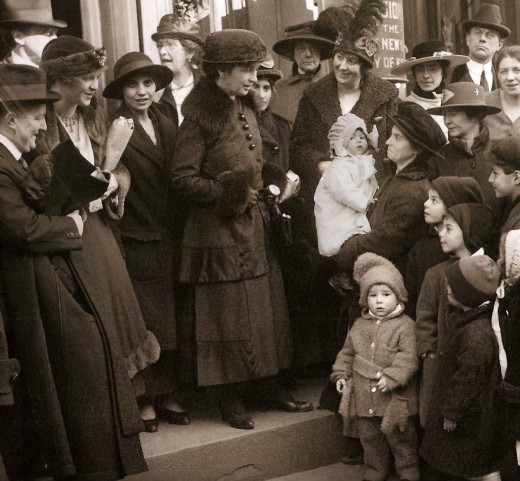
Growing frustrated with the ridiculousness of the Comstock Law, Margaret wrote a series of articles against it and the unyielding harassment she received from the government over something she viewed as a serious health threat to women everywhere. In her article “Shall We Break This Law?”, Margaret warned the government—warned the entire world—that women were not going to stand for not being allowed to control their bodies any longer. “Against the State, against the Church, against the silence of the medical profession, against the whole machinery of dead institutions of the past,” she wrote, “the woman of today arises.”
In 1922, Margaret married millionaire J. Noah Slee, who was not only supportive of her quest to make birth control legal, he financed many of her projects.In 1929, Boston officials vowed to arrest her if she gave a speech, so Margaret stood on stage with a gag tied over her mouth while her speech was read by Arthur M. Schlesinger Sr. By 1932 there were more than eighty birth control clinics.
Through the twenties and into the thirties, Margaret unfortunately became interested in the increasingly popular theory of eugenics. Eugenics was the belief that human beings could be selected for certain genetic traits that would be seen as beneficial or desirable in a person and humanity as a whole. Margaret was a believer in “negative eugenics,” where a person with undesirable traits—e.g. deafness, epilepsy, etc.—could be sterilized so that they could not pass that genetic “flaw” onto a child. Margaret thought this was an ideal way of eliminating handicaps and illnesses from the human race, but eugenics was very frequently used in the southern states as a way to keep African-Americans from reproducing. Margaret was aware of this and in a letter wrote in part, “we do not want word to go out that we want to exterminate the Negro population and the minister is the man who can straighten out that idea if it ever occurs to any of their more rebellious members.” This seems to be taken out of context, but many view this passage as evidence that Margaret wanted to wipe out African-Americans. It is true that she had written some racist things in the past, but they seem to be more a product of the times that actual racism, and she did work with African-American leaders to bring birth control to the black community and forbid any bigotry amongst her staff. W.E.B Dubois and Martin Luther King Jr. praised her for her work. Furthermore, she loudly denounced the Nazis’ practice of eugenics to control the Jewish population.
And it would surprise many to know that Margaret was firmly against abortions. In the early days of her quest, abortions were extremely dangerous, regularly resulting in the woman’s death (as in the case of Sadie Sachs), and Margaret couldn’t justify the killing of a fetus. She understood that in medical emergencies abortion would be necessary, but as she wrote in her book Family Limitations, “they will become unnecessary when care is taken to prevent conception. This is the only cure for abortions.”
In 1936, the Comstock law was rewritten when a federal court ruled that information on birth control was not obscene—now it was perfectly legal to distribute information on contraception and related topics without fear of arrest and imprisonment.
It wasn’t until 1937 birth control was legal in the United States, and then it was only available through a doctor—no going to the drugstore for a package of condoms just yet, and the pill was still a long ways off. That same year the American Medical Association advised that all medical schools should begin teaching about birth control as part of their curriculum. Margaret retired in 1938 but never truly stopped working, and in the 1950s convinced a philanthropist to donate money to create the first birth control pill.
Margaret Sanger eventually moved a retirement home in Arizona where she died in 1966 at the age of 86. That year, Planned Parenthood began to issue the Margaret Sanger Award to honor people who assisted in furthering reproductive rights and health. One of the recipients that year was Martin Luther King Jr.
Margaret Sanger works referenced:
America’s Women, Gail Collins 2003
The Complete Idiot’s Guide To Women’s History, Sonia Weiss et al 2001
Usborne Book of Famous Women, Phillippa Wingate et al 1997
Margaret Sanger http://en.wikipedia.org/wiki/Margaret_Sanger
Margaret Sanger Awards http://en.wikipedia.org/wiki/Margaret_Sanger_Awards#1967.E2.80.931969
Margaret Sanger https://www.nwhm.org/education-resources/biography/biographies/margaret-sanger/
“Shall We Break This Law?” https://www.nyu.edu/projects/sanger/webedition/app/documents/show.php?sangerDoc=240298.xml
“A Parent’s Problem or a Woman’s?” https://www.nyu.edu/projects/sanger/webedition/app/documents/show.php?sangerDoc=226268.xml


